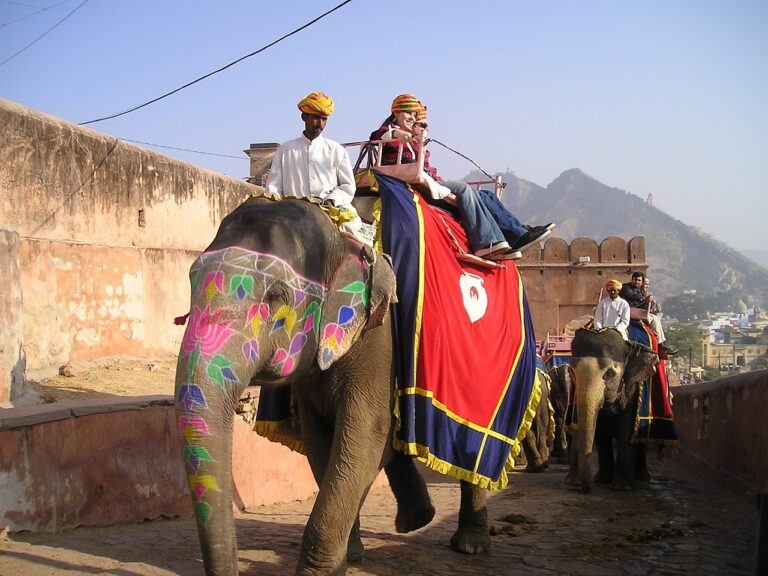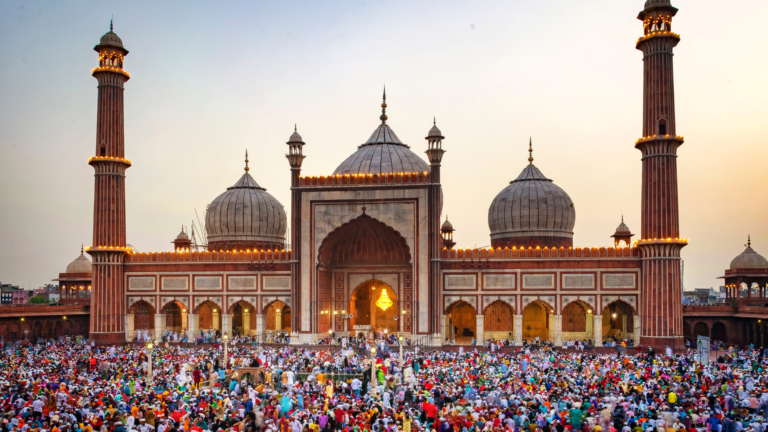India is renowned for its rich tapestry of spirituality, ancient architecture, and sacred rituals. Its iconic temples draw millions of visitors each year, offering a glimpse into the country’s spiritual essence and cultural heritage. Embarking on a journey to these revered sites provides not only a visual treat but also a deep sense of peace and reverence. In this blog, we’ll explore some of India’s most celebrated temples and what makes them truly unique.
1. The Golden Temple, Amritsar
- State: Punjab
- Significance: Known as Harmandir Sahib, this temple is the holiest shrine in Sikhism.
- Highlights: The Golden Temple is famed for its breathtaking architecture, with its gold-plated façade and serene Amrit Sarovar (sacred pool). Visitors are welcomed into the Langar Hall, where thousands are fed free meals daily, embodying the Sikh principle of selfless service.
- Experience: Watching the golden structure illuminate at sunrise or sunset is a soul-stirring experience.
2. Meenakshi Temple, Madurai
- State: Tamil Nadu
- Significance: A historic Hindu temple dedicated to Goddess Meenakshi (a form of Parvati) and her consort, Lord Sundareswarar (Shiva).
- Highlights: Known for its towering gopurams (gateway towers) adorned with thousands of intricately carved figures, Meenakshi Temple is an architectural masterpiece. Its colorful sculptures, impressive halls, and large temple tanks make it a visual wonder.
- Experience: Attend the evening ritual when the idols of the deities are taken out in a grand procession, providing a glimpse into ancient temple traditions.
3. Kashi Vishwanath Temple, Varanasi
- State: Uttar Pradesh
- Significance: Dedicated to Lord Shiva, Kashi Vishwanath is one of the twelve Jyotirlingas (sacred shrines) of Shiva.
- Highlights: Located on the banks of the Ganges River in one of the world’s oldest cities, Varanasi, the temple holds immense spiritual significance. The Ganga Aarti (ceremonial river worship) held on the ghats every evening attracts throngs of visitors.
- Experience: A visit here is not complete without observing or participating in the ritualistic Ganga Aarti, which illuminates the ghats with lamps and chants.
4. Brihadeeswarar Temple, Thanjavur
- State: Tamil Nadu
- Significance: A UNESCO World Heritage Site, this temple is dedicated to Lord Shiva and is one of the largest temples in India.
- Highlights: Built over 1,000 years ago during the Chola dynasty, Brihadeeswarar Temple showcases Dravidian architecture and boasts a 216-feet tall tower. The entire temple is made of granite, including its famous Nandi statue.
- Experience: Marvel at the architectural precision, especially the shadowless main tower, which is a remarkable feat of ancient engineering.
5. Jagannath Temple, Puri
- State: Odisha
- Significance: One of the Char Dham pilgrimage sites and the abode of Lord Jagannath (a form of Krishna).
- Highlights: The temple is famous for its annual Rath Yatra (Chariot Festival), where the deities are paraded on massive chariots. The temple’s kitchen is known as one of the largest in the world, feeding thousands of devotees daily.
- Experience: Witness the vibrant Rath Yatra if you’re visiting in June or July, or sample the temple’s prasad, prepared with ancient recipes.
6. Somnath Temple, Gujarat
- State: Gujarat
- Significance: A highly revered temple dedicated to Lord Shiva, believed to be the first of the twelve Jyotirlingas.
- Highlights: Overlooking the Arabian Sea, Somnath Temple has been rebuilt multiple times due to invasions, symbolizing resilience. Its tranquil seaside location and exquisite Chalukyan architecture make it a must-visit.
- Experience: Catch a sunset view from the temple, with the sound of waves crashing against the shore adding to the sacred atmosphere.
7. Vaishno Devi Temple, Jammu & Kashmir
- State: Jammu & Kashmir
- Significance: A famous pilgrimage site for devotees of Goddess Vaishno Devi, who represents Shakti (power).
- Highlights: Nestled in the Trikuta Mountains, reaching this temple involves a scenic trek or a pony ride. Millions visit annually to seek the goddess’s blessings, particularly during the Navratri festival.
- Experience: The 13-kilometer trek to the temple is a spiritual journey in itself, with chants of “Jai Mata Di” resonating along the path.
8. Kedarnath Temple, Uttarakhand
- State: Uttarakhand
- Significance: Another of the twelve Jyotirlingas, Kedarnath is dedicated to Lord Shiva and is one of the Char Dham pilgrimage sites.
- Highlights: Situated at an altitude of 3,583 meters, this temple is surrounded by snow-capped peaks, adding to its mystic charm. The temple is accessible only by a trek or helicopter, making it an adventure for pilgrims.
- Experience: The rugged trek to Kedarnath, amidst the Himalayas, is as spiritually rewarding as it is visually breathtaking.
9. Ranakpur Jain Temple, Rajasthan
- State: Rajasthan
- Significance: A significant Jain temple dedicated to Lord Adinath, known for its marble architecture.
- Highlights: This 15th-century temple features 1,444 marble pillars, each intricately carved with unique designs. The grandeur and precision of the craftsmanship are awe-inspiring, reflecting the Jain commitment to non-violence and peace.
- Experience: Walk through the cool marble interiors and admire the tranquility that pervades the temple complex.
10. Akshardham Temple, Delhi
- State: Delhi
- Significance: One of the most recently built temples, showcasing Hindu culture and spirituality.
- Highlights: Known for its stunning architecture, Akshardham Temple is a marvel of artistry, with elaborate carvings, a musical fountain show, and exhibits on Indian heritage. The temple complex includes a Yagnapurush Kund, the largest stepwell in the world.
- Experience: Attend the evening light and sound show, which highlights Indian cultural stories and provides a mesmerizing experience.
Tips for Visiting India’s Temples
- Dress Modestly: Many temples have dress codes that require covering shoulders, arms, and legs.
- Respect Rituals: Observe and respect the local customs and rituals; some temples may restrict entry based on religious beliefs.
- Follow Photography Rules: Photography might be restricted in certain areas or temples, so be mindful of signs.
- Be Prepared for Crowds: Popular temples can be crowded, especially during festivals. Early morning visits can offer a quieter experience.
India’s temples are more than just architectural wonders; they are a testament to the country’s profound spirituality, rich history, and artistic heritage. Each temple has its own story, symbolizing centuries of devotion and cultural legacy. Whether you seek a deeper connection to spirituality or a closer look at India’s artistic brilliance, a journey through these iconic temples will leave you inspired and enlightened.






